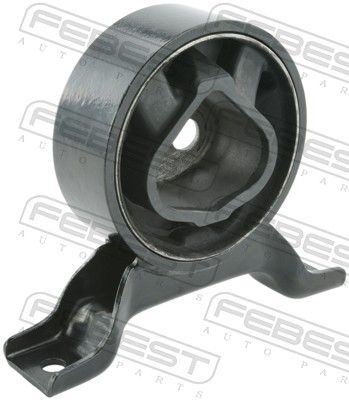What are the essential components of an axle drive system

Uncover the core elements that keep your vehicle running smoothly with our deep dive into the essential components of an axle drive system.
Understanding the Role of Axle Drive Systems in Vehicle Mechanics
In a vehicle, the axle drive system plays a pivotal role in transferring power from the engine to the wheels. This system is crucial for ensuring that your vehicle can move and handle various driving conditions efficiently. Without a properly functioning axle drive system, the vehicle's performance, fuel efficiency, and safety can be significantly compromised.
The axle drive system is responsible for converting the engine's rotational force into linear motion, enabling the wheels to turn. This system must balance power distribution, especially in complex driving scenarios like turning and uneven terrain. Understanding the intricacies of this system can help vehicle owners appreciate the importance of regular maintenance and prompt repairs.
Breaking Down the Axle Assembly: Core Components Explained
The axle assembly is a complex structure comprising several essential components that work together to drive the vehicle. Key components include the axle shafts, bearings, seals, and housing. Each component has a specific function and must work in harmony with the others for optimal performance.
Axle shafts are the primary components that transmit power from the differential to the wheels. Bearings and seals ensure smooth rotation and prevent contaminants from entering the assembly. The housing provides structural support and protection for the internal components. A well-maintained axle assembly ensures efficient power transfer and prolongs the lifespan of the vehicle.
The Crucial Role of Differential Gears in Axle Systems
Differential gears are a critical component of the axle drive system, especially in vehicles with rear-wheel or all-wheel drive. These gears allow the wheels to rotate at different speeds, which is essential when the vehicle is turning. Without differential gears, the wheels would be forced to spin at the same speed, leading to tire wear and difficulty in handling.
The differential gears help distribute the torque from the engine to the wheels while compensating for the differences in wheel rotation. This mechanism ensures smooth and controlled turns, enhancing the overall driving experience. Regular inspection and maintenance of the differential gears can prevent issues like gear wear and noise, ensuring the longevity of the axle system.
How Drive Shafts and CV Joints Work Together
Drive shafts and constant velocity (CV) joints are integral to the axle drive system, particularly in front-wheel and all-wheel drive vehicles. The drive shaft transmits power from the transmission to the differential, while the CV joints connect the drive shaft to the wheels, allowing for flexible movement.
CV joints are designed to accommodate the up-and-down motion of the suspension while maintaining a constant velocity, which is crucial for smooth power transfer. These joints are protected by CV boots, which prevent dirt and moisture from causing damage. Proper lubrication and timely replacement of worn-out CV joints and boots are essential for maintaining the efficiency and reliability of the axle drive system.
Maintenance Tips for Keeping Your Axle Drive System in Top Condition
Regular maintenance is key to ensuring the longevity and performance of your axle drive system. Some essential maintenance tips include checking and replacing the axle fluid, inspecting the CV boots for tears or leaks, and ensuring the differential gears are properly lubricated.
It's also important to monitor for any unusual sounds or vibrations, which could indicate issues within the axle drive system. Promptly addressing these signs can prevent more severe damage and costly repairs. Regular professional inspections can help identify potential problems early, keeping your vehicle running smoothly and safely.

 Loading..
Loading..